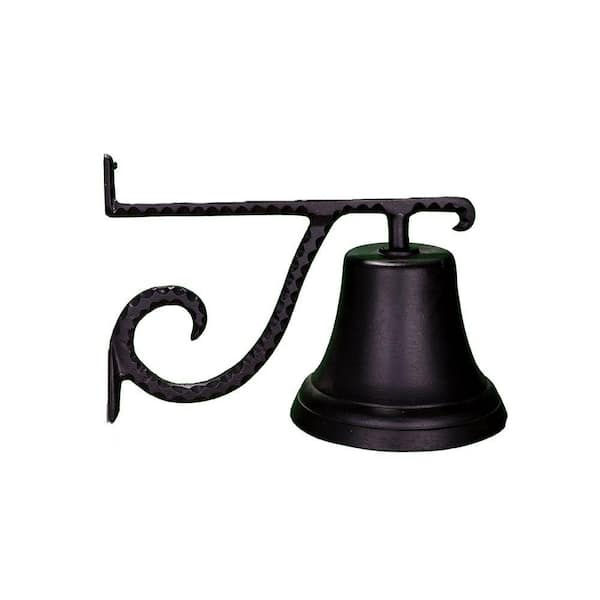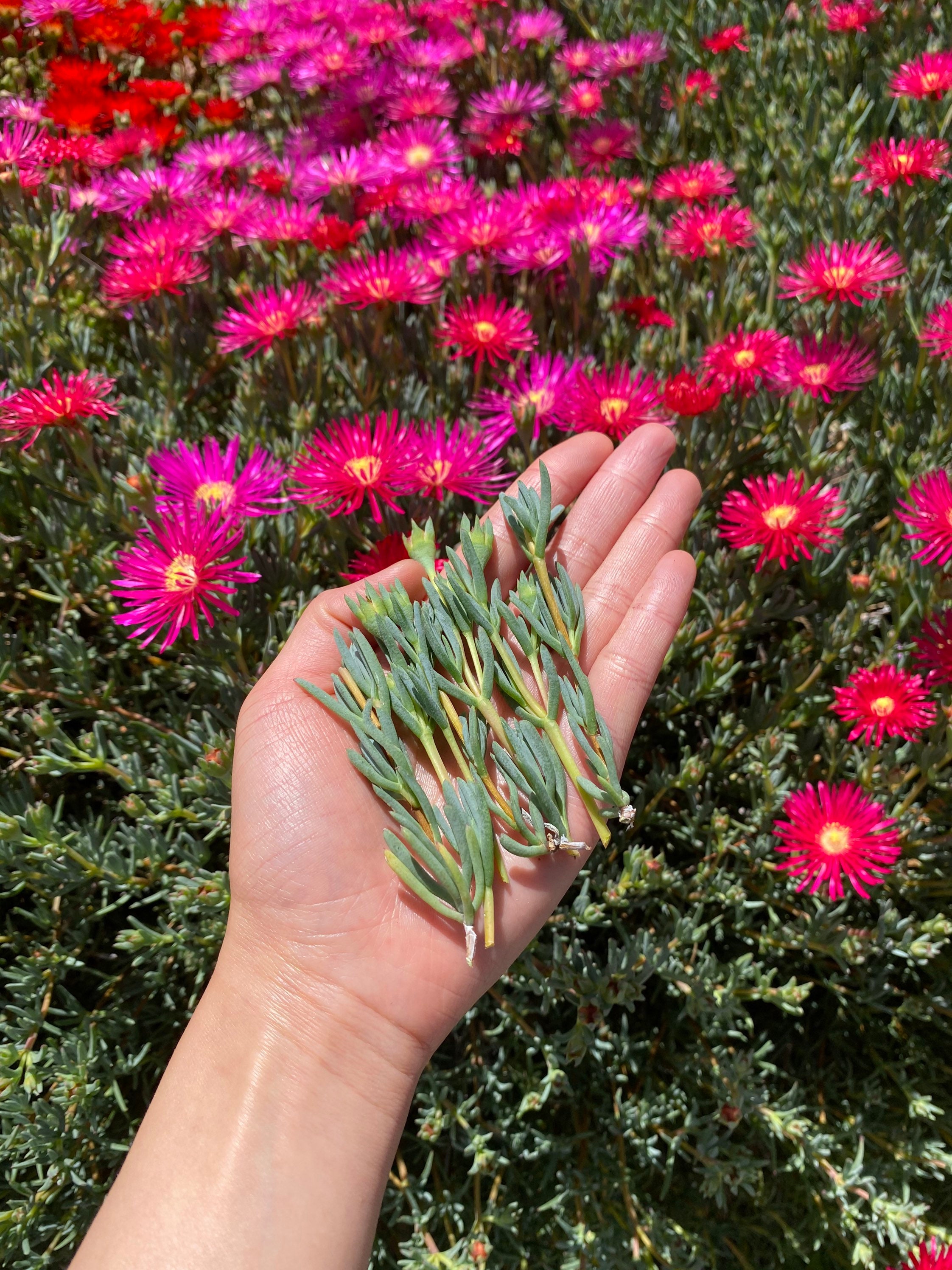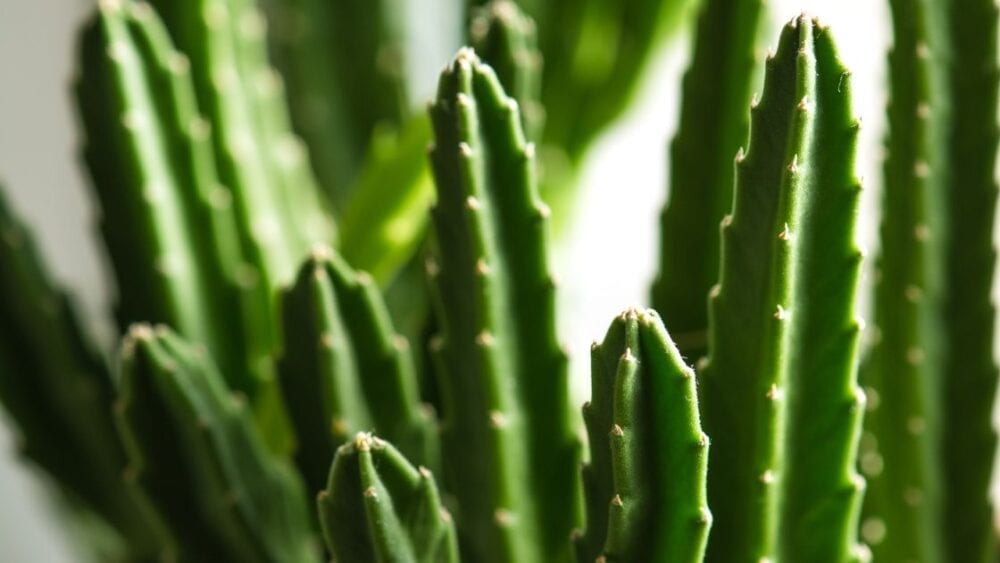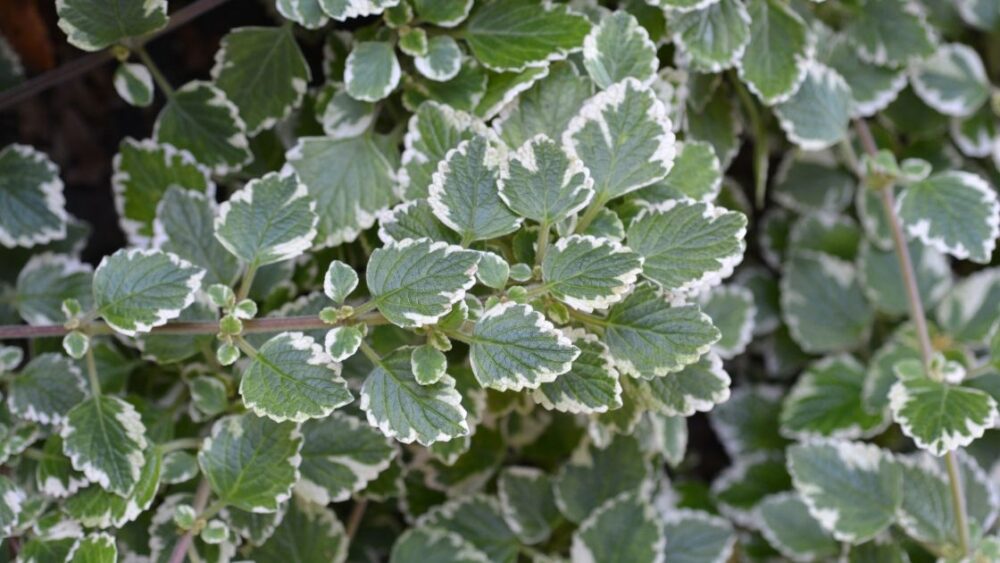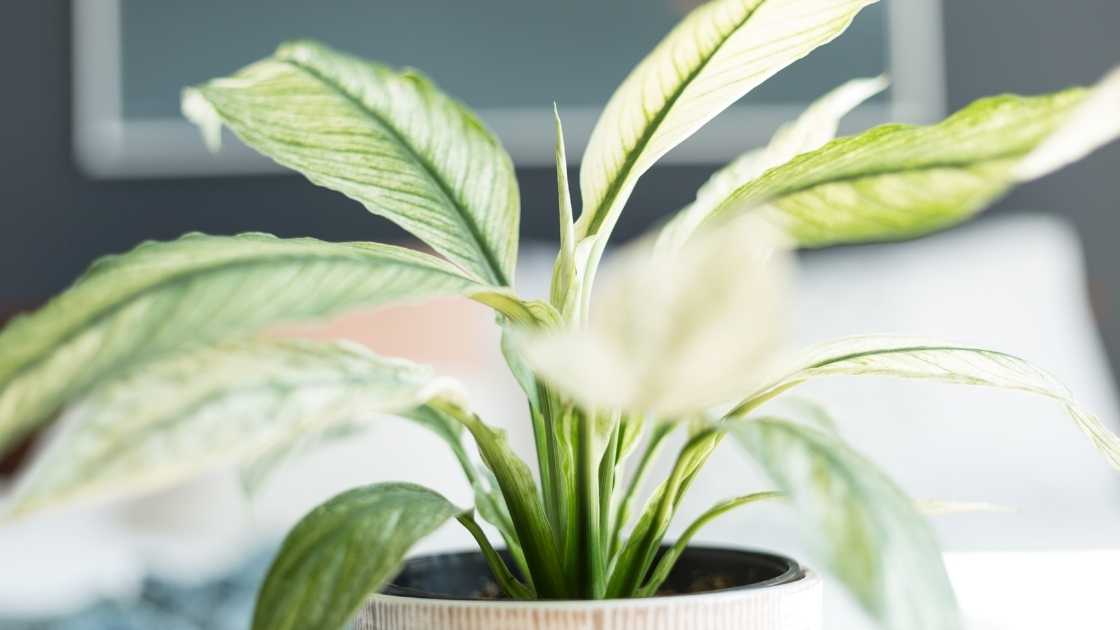
Ice plants are a large succulent family, containing about a hundred species. Unlike many other succulents, which rarely flower and only produce flowers that last a day or two, ice plants bloom profusely all throughout the summer. The flowers of the ice plant are daisy-like and are usually very numerous, covering the whole plant canopy.
Since ice plants are hardy, they are often planted straight in the ground and don’t have to be brought back inside when the winter arrives. However, some ice plant species may start losing their leaves as the temperatures drop below around 36F(2C), which is why they are grown in containers and brought back inside during the winter.
Can You Successfully Grow Ice Plants In Pots Or Containers?
Because ice plants have a very shallow root structure, they are very easy to grow in pots. The only difference with potted ice plants is that they may require a bit more frequent watering, due to the reduced volume of moisture-holding soil in the root zone.
Browse our Affiliate Products
Any type and size of container can work for ice plants – they can be grown in tiny pots on your window sill or in large stone planters in your garden. They tend to grow relatively quickly, often spreading everywhere and starting to ‘pour’ out of the container, often completely obscuring it.
Check out some unique pot ideas Amazon offers a shown below.
Problems With Growing Ice Plants In Containers
There are no disadvantages to growing an ice plant in a container. In fact, this is often the better option – it allows you to grow ice plants even in very cold zones and gives you the freedom to move the plants around and position them in a more aesthetic way in your garden.
As we mentioned, small potting containers will usually become very root bound, making the plant quickly absorb all the available moisture. Still, ice plants are succulents and don’t really require frequent watering. The optimal watering frequency of an ice plant planted in a shallow container may be around once per week, compared to once every three weeks when the plant is grown in an outdoor garden bed.
What Are The Optimal Growing Conditions of Ice Plants?
Whether they are growing in a pot or in a garden bed, ice plants have the same growing requirements, which are not difficult to meet. They require a bit more frequent watering compared to most other succulents, but are still very drought-resistant and won’t die quickly if you neglect them.
In fact, watering too much may do more harm than good, and ice plants still require a long period of drought between each watering in order to prevent root rot. Now let’s explore the growing conditions of ice plants in more detail!
For problems with blooming, this article may interest you: Aptenia Cordifolia not Blooming? (Solutions & Care Guide)
How much sunlight do they need?
Ice plants grow best in full sun. They can survive well in a shaded area or even inside, but they won’t be able to synthesize enough energy for flowering and will only produce a few small flowers.
The growth rate of the plant will also be reduced and the plant won’t be able to spread around and cover the pot – something which is often visually desirable when the plant is grown in containers.
What temperatures do they grow best in and what USDA zones are suitable for them?
Ice plants are classified as being hardy down to USDA zone 5-9. However, many species will not do well in frosty weather and will start shriveling and losing leaves. This still won’t kill the plant, and new growth will emerge as soon as the temperatures pick up during the spring.
Some species, like the popular Delosperma cooperi, can survive temperatures as low as 0F (-17C), without loosing their foliage! In the summer, the plant can survive the dry heat of most locations without any problems, provided that it’s watered frequently enough – usually once every 2-3 weeks.
What type of soil is required?
Well draining soils are a must for all species in the Delosperma genus. Soils that are dense, poorly draining and have a high clay content will quickly suffocate the tiny root hairs of the plant, leading to tissue death and rotting problems. Ice plants grow surprisingly well in poor soils and don’t require much fertilization.
However, if a plant has been inhabiting the same container for multiple years, it’s a good idea to start fertilizing once each spring. Excessive fertilization however, is one of the easiest ways to kill the plant – not only will it damage the roots, but it will interfere with the dormancy period of the plant, causing all sorts of problems, including poor flowering, uneven growth and leaf spots.
For more information about soil, check out our article by clicking the link. Outdoorgardenaccessories.com/what-are-the-best-potting-soils-for-every-type-of-plant/
How much water do they need?
Ice plants come from areas of Africa that receive relatively large quantities of rainfall. This is part of the reason why they don’t look much like succulents at first glance and some people may even confuse them with daisies or other low-growing non-succulent garden plants.
Still, the optimal watering frequency of ice plants is relatively low – watering every 2-3 weeks is usually ideal. There may be some experimentation necessary to determine the optimal watering frequency, especially for plants growing in small pots. It’s easy to tell when the plant is dehydrated and needs water – its leaves will start shrinking and will feel soft when you squeeze them gently. It’s important to not water ice plants during their rest period in the winter – doing so can often lead to fatal root rot issues.
Best type of potting container

When ice plants are planted in a suitable, well-draining and sandy soil, the type of container they grow in doesn’t matter much and comes down to what you visually prefer. It’s important to consider that the canopy of ice plants has a tendency to spread beyond the edge of the pot, falling down and ‘coating’ the container.
In temperate climates, ice plants are often potted in massive stone planters, which are heavy and difficult to move around. This doesn’t serve any practical purpose for the plant and just looks good in many gardens. Because ice plants produce a lot of branches and leaves, propagating them and planting many cuttings in many different containers at the same time is very easy. This is best done during spring or summer.
For more information about which type of pot to use, click here. Outdoorgardenaccessories.com/what-is-the-perfect-pot-for-my-plants/
Do ice plants grow well indoors?
Ice plants can survive indoors, but they will not grow quickly, nor become large. This of course is caused purely by the limited light intensity indoors – if you can provide the plant with a lot of direct sunlight by placing it on the sill of a south-facing window, it will still grow well and bloom abundantly.
Because ice plants are so easy to propagate from cuttings, you can easily plant them in many pots and experiment with placing some of them indoors.
For more information about Ice Plants, you can continue reading by clicking here. Outdoorgardenaccessories.com/pink-ice-plant-how-to-care-and-propagate/
What to Do If Your Ice Plant Aren’t Doing Well?
Ice plants are very resilient and aren’t prone to dying unexpectedly. If you have problems with your plant, the problem is usually caused by one of its basic growth requirements mentioned above not being met. Caring for the plant too much and giving it too much attention can also often lead to problems – too much fertilization and too frequent watering can easily kill the plant.
If the plant receives too little light, it will become pale and will not flower properly. Given insufficient light, pink ice plants will lose their pinkish leaf coloring and their leaves will become almost white. If your plant is doing poorly, but you’re sure that all the growth conditions are optimal, your best bet is to repot the plant in a different soil mix and make sure that the soil contains enough sand or perlite.
How Can You Compensate For Unfavorable Growing Conditions?
When it comes to succulents like the ice plant, unfavorable growing conditions usually means too little light or unsuitable ambient temperatures. There is little you can do to compensate for the lack of light – your plant will not grow well and it will not produce many flowers.
Some people think that fertilization can make up for lower light intensities, by providing the plant with ‘ready’ nutrients. This is very far from the truth – plant fertilizers are simply concentrated forms of nitrogen, phosphorus and potassium, which don’t provide energy for the plant on their own.
The only way the plant can manufacture the sugars necessary for growth and flowering is by photosynthesis. The growth of ice plants isn’t hindered much by lower temperatures and they will grow well outside even in colder summers.
Do All Ice Plant Varieties Have The Same Growth Requirements?
The ice plant family contains about 100 species and many of them look very different. However, when people talk about ice plants, they usually refer to Delosperma cooperi, which is the most common species, with thin leaves and purple, daisy-like flowers. Some ice plant species, like Mesembryanthemum have much smaller leaves and are used to hotter weather conditions and less rain. If you’re not growing Delosperma cooperi, but another, less common ice plant species, it’s best to research its specific growth requirements.
The reason different ice plant species may have different requirements is because different species are native to different areas of South or East Africa and the whole ice plant family is spread around at least 1/3rd of the whole continent.
Final Thoughts
Ice plants are very easy to take care of and grow very well in potting containers. The container size is not important and the plant can be easily transplanted to a larger container if it becomes root bound. A single plant can be easily split and divided into many individual plants and even tiny cuttings can be easily rooted, making it very easy to ‘spread’ the plant into multiple containers. The only thing you need to be careful of is too much watering and too much fertilization – both of those can severely harm the plant and lead to irreversible root rot.


